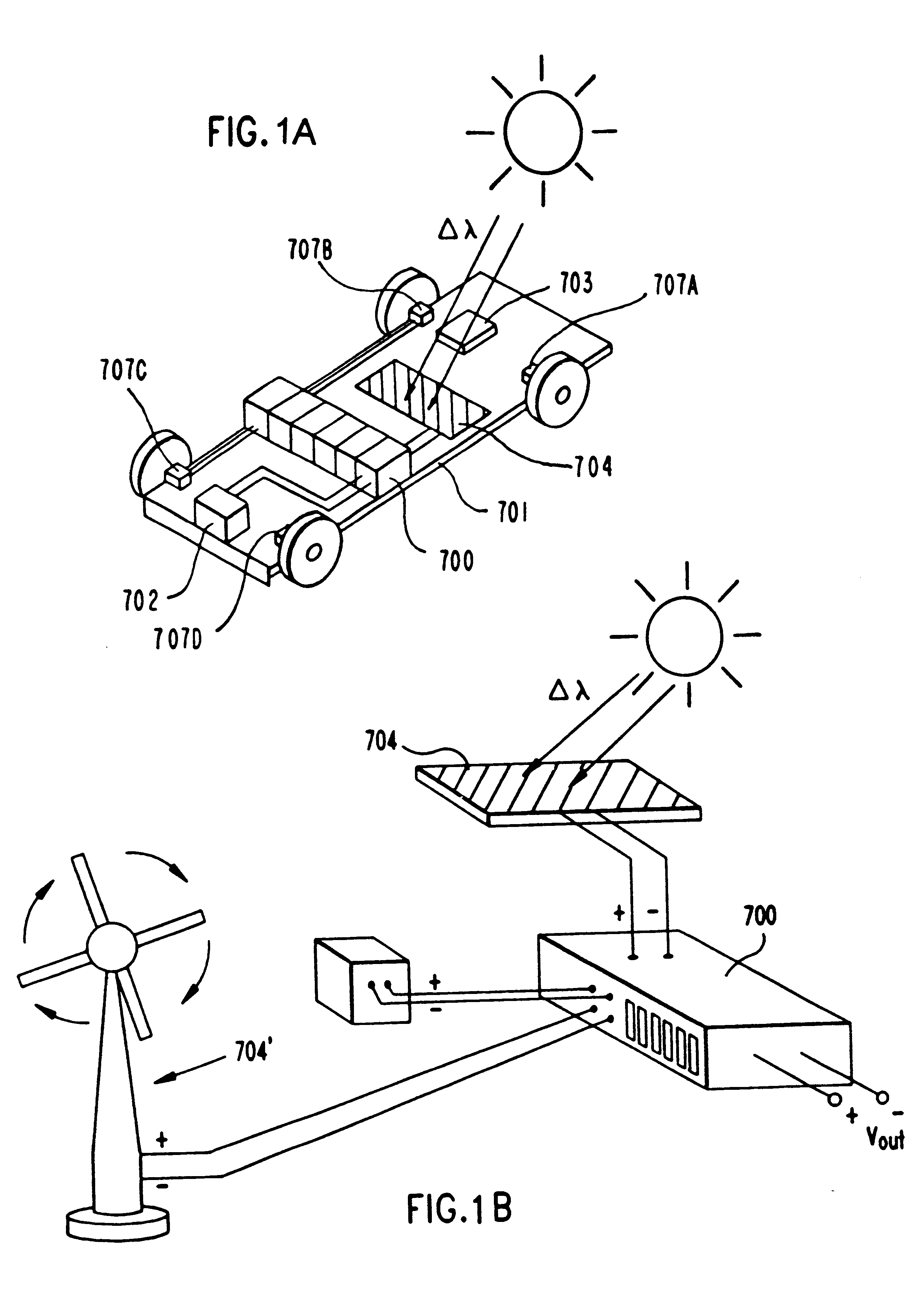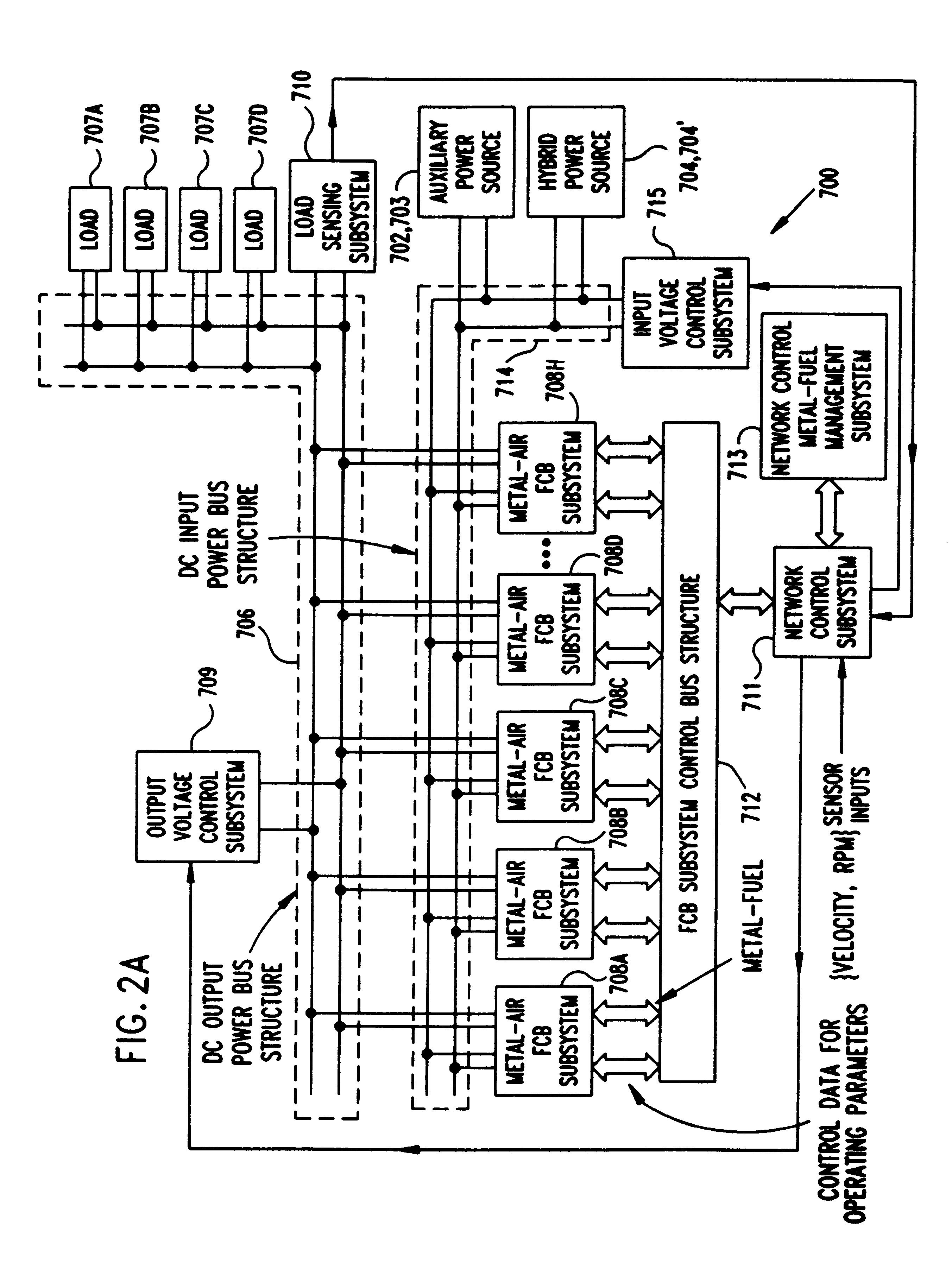Electrical power generation system having means for managing the discharging and recharging of metal fuel contained within a network of metal-air fuel cell battery subsystems
a technology of electric power generation system and fuel cell battery, which is applied in the direction of fuel cells, secondary cells, electric devices, etc., can solve the problems of special fuel handling procedures, fuel inefficiency, and hydrogen as a fuel source in automobiles
- Summary
- Abstract
- Description
- Claims
- Application Information
AI Technical Summary
Benefits of technology
Problems solved by technology
Method used
Image
Examples
Embodiment Construction
Of the Present Invention should be read in conjunction with the accompanying Drawings, wherein:
FIG. 1A is a schematic representation of a transportation vehicle, wherein the electrical power generation system of the present invention is provided for the purpose of generating and supplying electrical power to electrically-driven motors coupled to the wheels of the vehicle, and wherein auxiliary and hybrid power sources are provided for recharging metal-fuel within the FCB subsystems thereof;
FIG. 1B is a schematic representation of the electrical power generation system of the present invention realized as a stationary electrical power plant having auxiliary and hybrid power sources for recharging metal-fuel within the FCB subsystems thereof;
FIG. 2A is a schematic representation of the electrical power generation system of a first illustrative embodiment, wherein a network of metal-air FCB subsystems are operably connected to a DC power bus structure and controlled by a network contro...
PUM
| Property | Measurement | Unit |
|---|---|---|
| degree of porosity | aaaaa | aaaaa |
| voltage | aaaaa | aaaaa |
| voltages | aaaaa | aaaaa |
Abstract
Description
Claims
Application Information
 Login to View More
Login to View More - R&D
- Intellectual Property
- Life Sciences
- Materials
- Tech Scout
- Unparalleled Data Quality
- Higher Quality Content
- 60% Fewer Hallucinations
Browse by: Latest US Patents, China's latest patents, Technical Efficacy Thesaurus, Application Domain, Technology Topic, Popular Technical Reports.
© 2025 PatSnap. All rights reserved.Legal|Privacy policy|Modern Slavery Act Transparency Statement|Sitemap|About US| Contact US: help@patsnap.com



